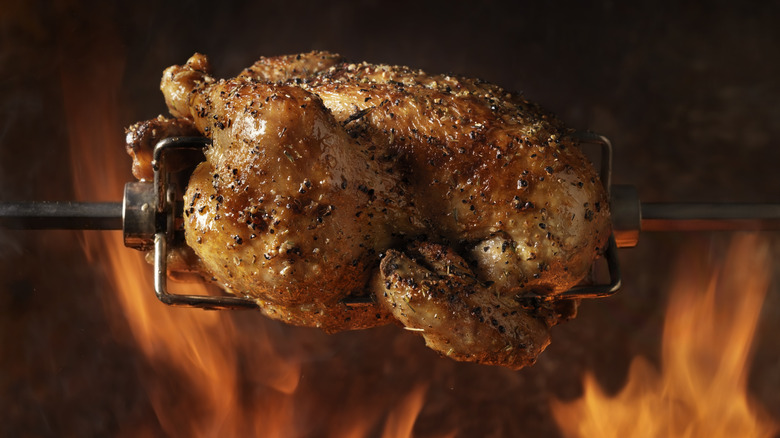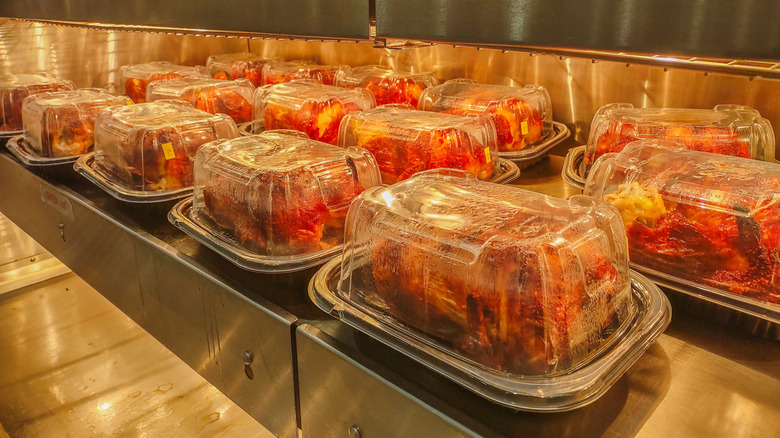The Rotisserie Chicken Red Flag That's Super Easy To Spot
Are you buying a rotisserie chicken for dinner? Excellent choice! This hot, juicy chicken is available at many supermarkets and often for cheap, and it's the perfect way to get a healthy, homemade meal without having to cook. But before grabbing any chicken from the lineup, there's a serious red flag to look out for. When picking out a rotisserie chicken, look closely at the skin. It should be a crisp, golden brown and cover the entirety of the meat. If the skin has cracks throughout the body or is breaking apart at the joints, the meat is likely overcooked.
You want the skin to appear taut. Rotisserie chickens require careful timing and temperature to cook thoroughly without drying out. Tight skin is a sign that the meat is still moist while shrunken skin is a sign the juices have evaporated.
Succulent flesh encased in sticky, flavorful skin is the goal. Nobody wants dry, stringy, overcooked chicken. So, if the skin doesn't look quite right, skip it. Chances are, there are plenty more chickens to choose from. But this easy hack is just one way to determine the best rotisserie chickens available, so read on to learn more red (and green) flags to watch out for.
Picking the tastiest rotisserie chicken
Are you wondering what makes rotisserie chicken so delicious? For starters, the chickens are cooked in stacked rows, so the yummy juices drip down, basting the chickens below. The rotating spit means the meat cooks evenly, and once wrapped, the condensation preserves moisture and softens the skin to create that sticky texture we love. But when we see these chickens in their packages, it can be hard to tell the good from the bad — and skin is just one piece of the puzzle.
For the best rotisserie, avoid chicken sitting in a pool of liquid. If the juice is at the bottom of the package, it's no longer in the chicken itself. Perhaps the chicken was cooked too long, causing those precious juices to seep out of the meat. Another thing to look out for is temperature control. Keeping food at room temperature isn't just a red flag at buffets, but also at rotisserie stands. After all, these foods need to be kept in a hot environment to prevent harmful bacteria from growing.
There are several tell-tale signs of a solid rotisserie chicken. Check the timestamp to choose the freshest option. Or better yet, ask the staff when they churn out these chickens so you can time your shopping trip accordingly. And instead of solely focusing on appearance, pick up the product and see how much it weighs. Go for the heaviest chicken available. You'll get more bang for your buck this way, and the extra weight is a sign that the meat is juicier. Plus, more meat means you're likely to get an additional meal out of that rotisserie chicken.

